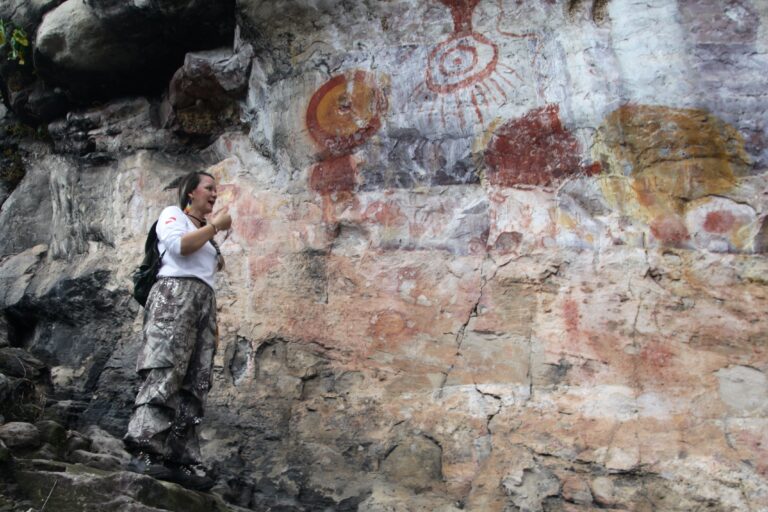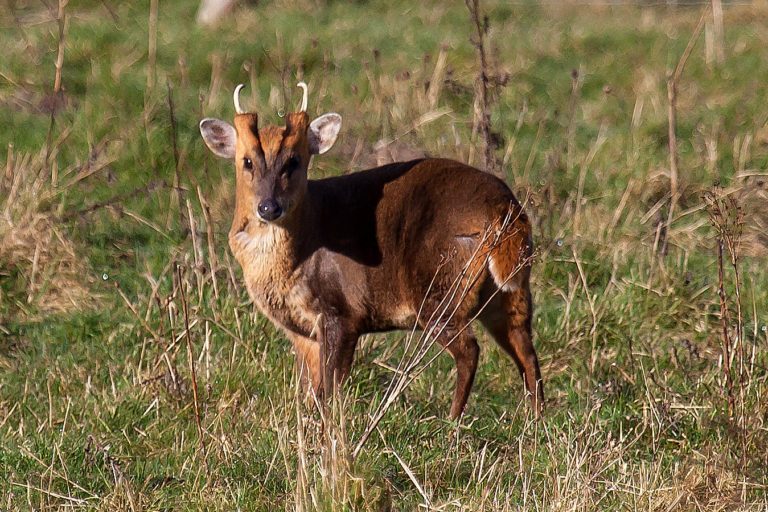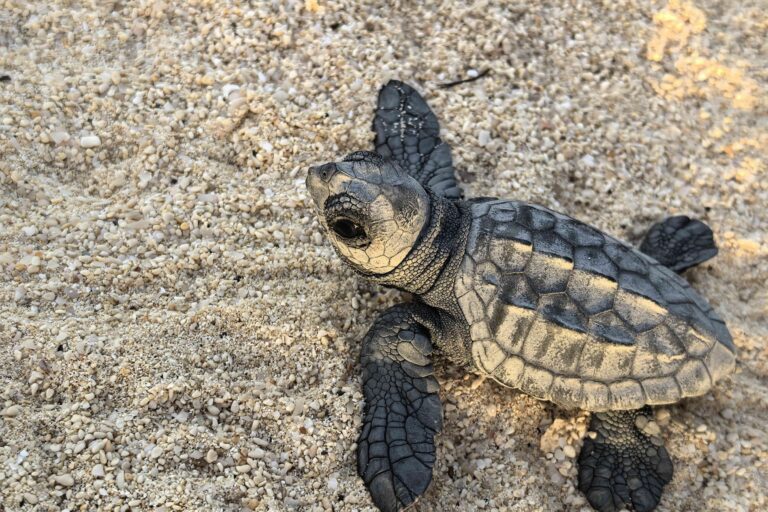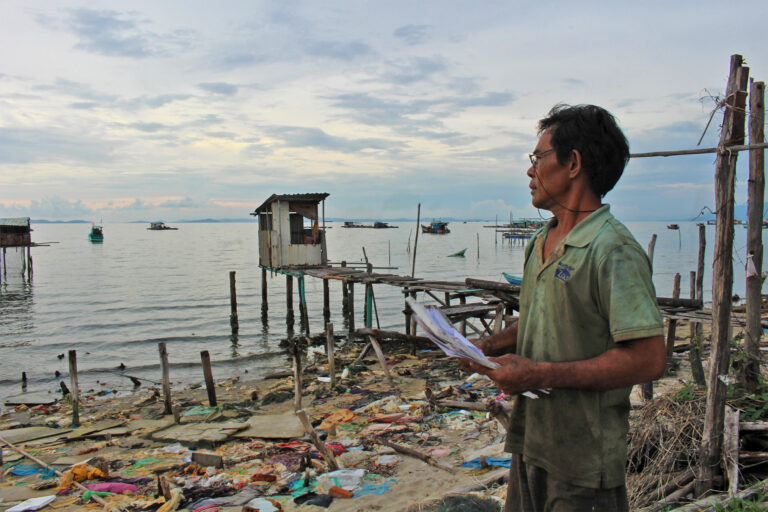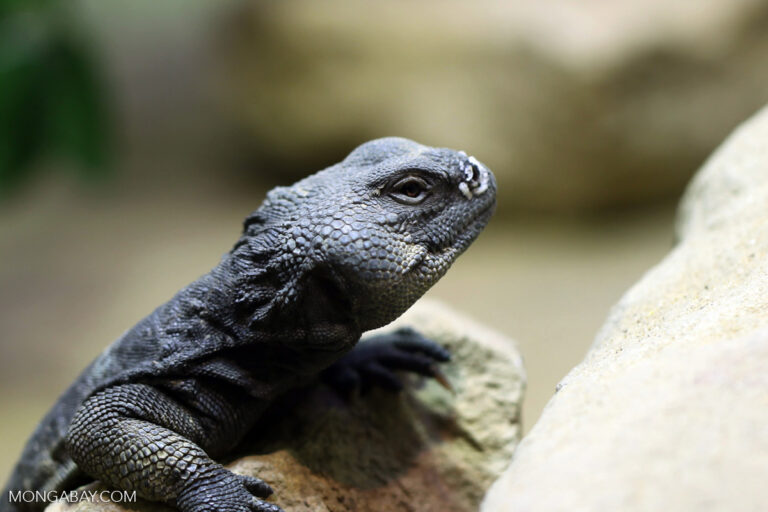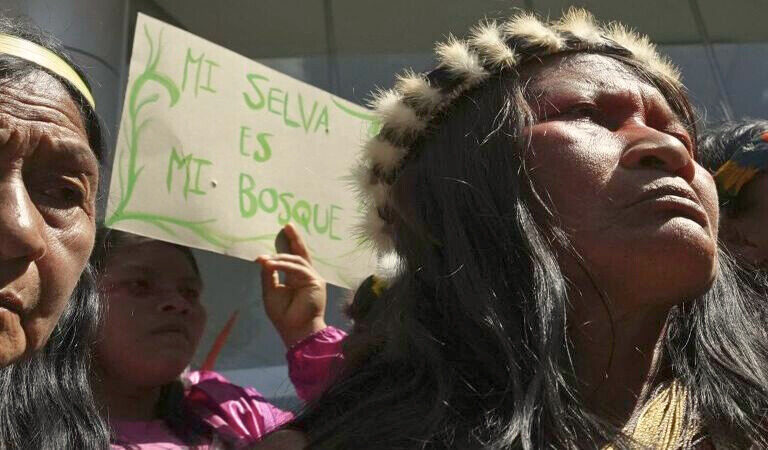- Illegal deforestation in Guatemala’s Sierra del Lacandón National Park is accelerating, driven by cattle ranching and drug-trafficking activities.
- The park is a critical biological corridor, home to numerous threatened species, and connects protected areas in Guatemala and Mexico.
- Indigenous communities, many of which settled in the area during the civil war, are now involved in deforestation activities under pressure from powerful political and economic figures, threatening the region’s ecological integrity.
Mongabay reported in 2023 that thousands of hectares of forest were felled, likely for cattle ranching and airstrips for drug trafficking. Since then, the situation appears to have grown worse. Preliminary satellite data collected by Global Forest Watch show deforestation is pushing westward into the park, an area of previously intact forest. Roughly one-third of the park’s primary forest has been cleared since GFW began tracking it in 2002.
Sierra del Lacandón National Park is a proposed UNESCO World Heritage Site. It’s home to more than 300 species of birds and dozens of amphibian, mammal and reptile species.
The ecological importance of the area extends beyond the boundaries of the park itself. It’s a critical biological corridor between the Maya Biosphere Reserve in Guatemala and the Montes Azules Biosphere Reserve in Mexico, allowing wildlife such as scarlet macaws (Ara macao) and Baird’s tapirs (Tapirus bairdii) to safely move between protected areas. Without it, critically endangered species including the Yucatán black howler monkey (Alouatta pigra) and near-threatened jaguar (Panthera onca) can’t freely move through the region to find resources and mates needed for the survival of the species.
When the park was founded in 1990, it was already home to roughly 20,000 people. Many moved there seeking safety amid Guatemala’s brutal civil war that began in the 1960s when the U.S. government backed a coup against a democratically elected leftist government. The government ordered the redistribution of undeveloped land from large landowners to landless farmers. It also required wealthy landowners to start paying appropriate taxes. At the time, the U.S.-based United Fruit Company controlled a large portion of the country’s arable land, as much as 42% by some accounts, and was exempt from paying taxes. Officials in the Eisenhower administration, including the director of the CIA, held stock in United Fruit. Citing a fear of communism in Central America, the U.S. government installed a president who was friendlier to U.S. interests, including United Fruit.
What followed was a 36-year civil war in which rural communities, many Indigenous, were caught between left-wing guerrillas and the Guatemalan government. The government believed Indigenous groups sided with the guerrillas. In 1999, with backing from the United Nations, the Commission for Historical Clarification issued the report “Guatemala: Memory of Silence.” Citing racism, the report found the government, “committed acts of genocide against groups of Mayan people.” Roughly 200,000 people were disappeared during that time and another 1.5 million were displaced. They sought refuge in remote parts of the country, including the area that later became Sierra del Lacandón National Park.
Eight communities in Sierra del Lacandón work with the government on sustainability in the forest, Javier Marquéz, executive director of Defensores de la Naturaleza (Defenders of Nature), one of the organizations managing the park, told Mongabay in 2023. Another two communities have declined to do the same and instead dedicate themselves to clearing land for cattle ranching, Marquéz said.
Officials in the park told Mongabay that rural communities often have the backing of powerful political and economic figures involved in the drug trade. They pay community members to invade new parts of the park and oversee cattle ranches that can be used for money laundering and disguising new airstrips for transporting illegal drugs.
“[The communities] will never say they’re doing this for such-and-such minister or mayor so-and-so,” an environmental legal expert, who asked to remain anonymous due to fear for their life, told Mongabay in 2023. “They never talk. We don’t know if it’s out of fear or something else, but they won’t talk to us. They’re the ones who suffer the legal consequences, but the people actually funding the encroachment stay out of reach.”
Marquéz said that without swift intervention, the ecological lifeline connecting this region of Guatemala to Mexico faces collapse.
“If the current government does not prioritize this issue, I believe that we, as civil society, will not be able to stop the strong deforestation that exists,” he told Mongabay in a recent email.
Banner image of Yucatán black howler monkey (Alouatta pigra) by Rhett A Butler/Mongabay.
Editor’s Note:This story is powered by Places to Watch, a Global Forest Watch (GFW) initiative designed to quickly identify concerning forest loss around the world and catalyze further investigation of these areas. Places to Watch draws on a combination of near-real-time deforestation alerts, automated algorithms and field intelligence to identify new areas on a monthly basis. In partnership with Mongabay, GFW is supporting data-driven journalism by providing data and maps generated by Places to Watch. Mongabay maintains complete editorial independence over the stories reported using this data. Sign up for GFW’s monthly email updates featuring these stories.
Feedback: Use this form to send a message to the editor of this post. If you want to post a public comment, you can do that at the bottom of the page








